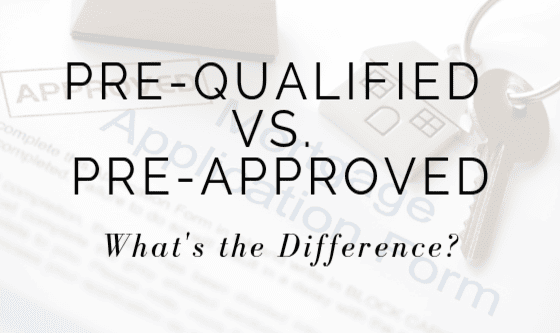
When buying a home, the terms “pre-approval” and “pre-qualification” often come up, and while they may sound similar, they have distinct meanings in the mortgage process. Understanding these terms is crucial for making informed decisions as a buyer. Here’s what you need to know about the differences between pre-qualification and pre-approval.
1. What is Pre-Qualification?
- Definition: Pre-qualification is an initial assessment that gives you a general idea of how much money you might be able to borrow. It’s typically a quick and informal process where you provide basic financial information to a lender, such as your income, assets, and debts.
- Process: You usually don’t need to submit detailed documentation. Instead, the lender uses the information you provide to estimate how much home you can afford.
- Purpose: Pre-qualification is often considered the first step for buyers who want an initial understanding of their buying power. It’s not a commitment to lend money but rather an estimate of your potential borrowing capacity.
Pros of Pre-Qualification
- Quick and Easy: The process is straightforward and doesn’t require a hard credit check, making it a simple way to gauge your financial position.
- Good for Planning: It gives you a broad sense of what you can afford, helping you begin your home search with realistic expectations.
2. What is Pre-Approval?
- Definition: Pre-approval is a more in-depth and formal process where the lender verifies your financial details and creditworthiness. It provides a specific loan amount that you’re likely to be approved for, based on documented evidence.
- Process: During pre-approval, you’ll need to complete a mortgage application and provide documentation such as pay stubs, tax returns, credit reports, and bank statements. The lender conducts a thorough review of your financial history, including a hard credit check.
- Purpose: A pre-approval letter demonstrates to sellers that you are a serious buyer with a lender’s commitment to lend a specific amount, subject to conditions. This can give you an advantage in competitive markets.
Pros of Pre-Approval
- Stronger Offer: A pre-approval letter shows sellers you’re a serious buyer with financing in place, making your offer more appealing.
- Clearer Budget: Knowing exactly how much you can borrow allows you to shop for homes with confidence and focus on properties within your price range.
Key Differences at a Glance
- Level of Detail: Pre-qualification is based on self-reported information and does not require verification. Pre-approval involves a comprehensive review and verification of your financial details.
- Commitment: Pre-qualification is not a guarantee of loan approval, while pre-approval is a more reliable indication that a lender is willing to extend you credit (subject to conditions).
- Usefulness in the Buying Process: Pre-qualification is a preliminary step, helpful for early-stage buyers. Pre-approval is more impactful and often necessary when making an offer on a home.
Which Should You Get?
For serious buyers, a pre-approval is highly recommended. It gives you a competitive edge, demonstrates financial readiness to sellers, and allows for a smoother offer process. Pre-qualification is a good starting point for those just beginning to explore their home-buying options but shouldn’t be relied upon when you’re ready to make offers.
Final Thoughts
Understanding the difference between pre-qualification and pre-approval is essential to navigating the home-buying process with confidence. At Bale Real Estate Group, we’re here to help you every step of the way, ensuring you’re fully prepared for your home purchase. If you have questions or need guidance on the mortgage process, don’t hesitate to reach out!
For personalized advice and more helpful tips, contact the Bale Real Estate Group today. We’re committed to making your real estate journey a seamless experience!

